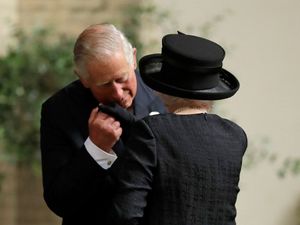King Charles III will decide Royal Family's mourning period over Queen's death
The length of time the royal family has spent in Court Mourning has varied through the ages.

The royal family and their households traditionally enter into Court Mourning following the death of a sovereign.
The length of time spent in Court Mourning has varied throughout history, with the details decided on by the new monarch and the instructions published in the London Gazette.
When George VI died in February 1952, the royals, on the order of Elizabeth II, observed Court Mourning for just over 16 weeks – much shorter than previously.

After George V’s death in January 1936, the court, on the orders of Edward VIII, went into full Court Mourning for six months, followed by three months of half- mourning.
When Queen Victoria died in January 1901, the court went into mourning for an entire year.





